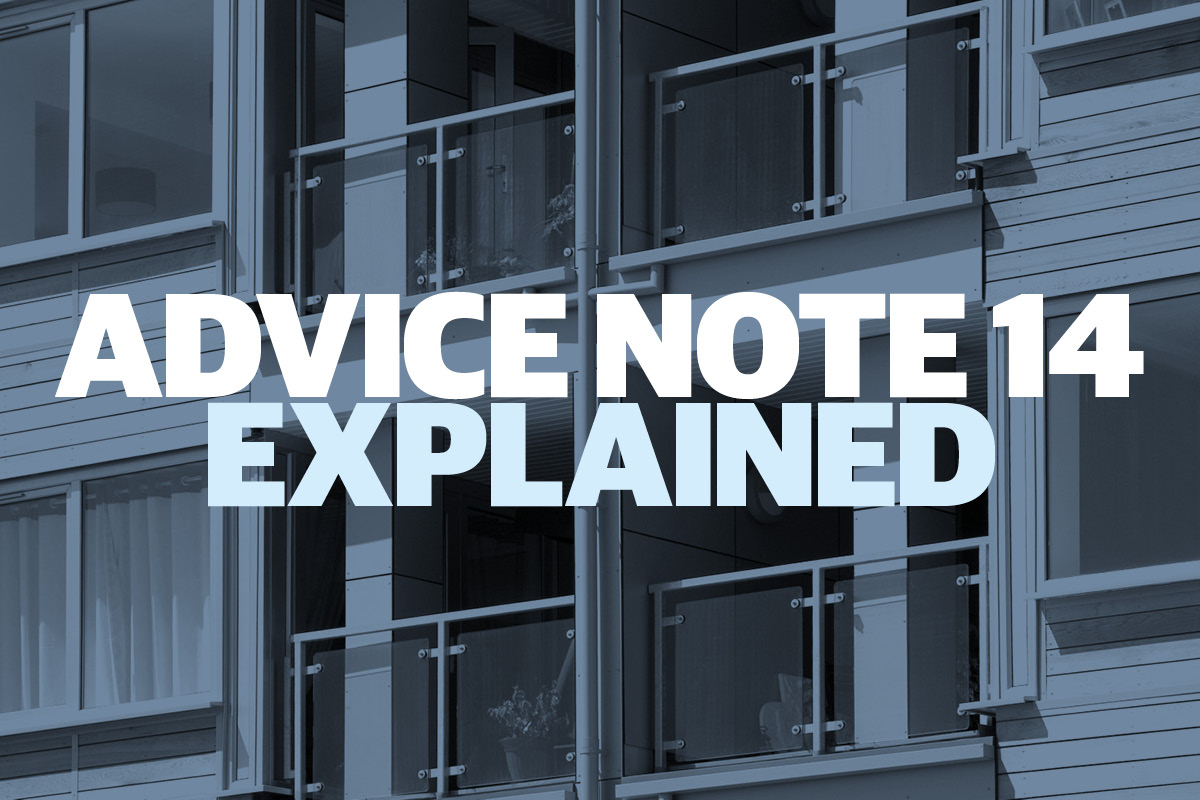The mortgage prisoners: how post-Grenfell advice on cladding is preventing the sale of thousands of high-rise flats
Thousands of people are unable to sell their homes because they cannot confirm the safety of their buildings’ cladding. Jack Simpson investigates. Photography by Asadour Guzelian
It was supposed to be a straightforward process for Helen Brierley (above). After moving back to Manchester to be closer to her family, she decided to rent out the flat she owned in Southampton’s Telephone House, remortgage it and eventually sell it so she could buy a new home in the North.
She found a mortgage deal and a surveyor to value the property. But to her shock and horror, when she got the valuation back, she learned that the property into which she had ploughed her life savings just three years earlier was now worth £0.
Ms Brierley’s story is one becoming familiar to many homeowners in tall buildings.
The government published advice in December that called on owners of buildings more than 18 metres tall to check for and remediate dangerous materials other than aluminium composite material (ACM) cladding in the external walls. This has had a cooling effect on the mortgage market.
Homeowners are often unable to say what the materials in their buildings’ facades are and whether they are safe, making £0 valuations common. In turn, lenders are unwilling to provide mortgages on properties deemed worthless. This has left many, like Ms Brierley, trapped – unable to remortgage and unable to sell.
Ms Brierley, who is a property solicitor, tells Inside Housing that since being made aware of the cladding issues, she has tried 10 different mortgage providers, all of which have rejected her applications.
Her mortgage payments have also become unaffordable, since she has moved onto a more expensive buy-to-let mortgage after renting out her property. As a result, she could be made bankrupt and lose her home. As lawyers are unable to practise if they are declared bankrupt, she could lose her livelihood, too.
In the two years since the Grenfell Tower tragedy, the focus has largely been on ACM cladding – the material many say was partially to blame for the rapid spread of the fire that killed 72 people.
In the fire’s immediate aftermath, guidance was produced advising against its use and advice was given to remove it where found.
The first bit of official guidance about other types of cladding came in December last year, when the government published Advice Note 14. While not a legal requirement, the document calls on all building owners to take “general fire precautions” in their buildings and make sure the external wall systems are “safe”.
“We feel completely trapped. My mental health has gone to pot. It is the waiting. It is a constant battle to get information”
Evad Ould-Okojie, Melia House tenant
For existing buildings, “safe” means ensuring materials are safely installed and maintained. It also means using materials with limited combustibility, unless they form part of a system that has achieved the Building Research Establishment’s BR 135 classification – something applicable to very few materials.
It is this guidance that is causing major repercussions for those wanting to sell or remortgage.
Martin Boyd, chair of campaign group the Leasehold Knowledge Partnership, says: “Valuers have become increasingly concerned, because Advice Note 14 means the owner has to say the building’s material is fully safe, which is very difficult to do while the building waits for inspection results and while everyone waits for the government’s wider cladding test outcomes.”
Surveyors and mortgage lenders are requiring building owners to demonstrate that cladding meets Advice Note 14’s criteria. If they cannot, the properties are valued at well below their true value or even zero.
Most building owners cannot immediately provide these assurances, so they are having to get trained professional engineers to carry out lengthy and costly checks, holding up sales.
Mark London, partner at Devonshires Solicitors, says that the mortgage industry started picking up on Advice Note 14 in January.
“As the understanding of the issue has become more widespread, the questions being asked have become more sophisticated – can you identify the type of insulation, the specific type of cladding and whether the cavity barriers have been inspected?”
He adds that different lenders are taking different approaches, with some satisfied if a building is being investigated, while others require full remediation plans.
The scale of the problem could be huge. There are 11,000 high-rise buildings in the UK. Many are residential and many of those have cladding or insulation, particularly those built in the past 20 years.
Those that do will require lengthy inspections to check they are safe; those deemed unsafe may need costly remediation work.
Matthew Pennycook, Labour MP for Greenwich and Woolwich, raised the issue in a recent letter to the housing secretary. He believes the problem could affect hundreds of thousands of people.
Recent analysis by the Labour Party has estimated that 600,000 people across the country are living in unsellable flats with dangerous cladding.
It is causing havoc for those already affected.
Click here to read MP Matthew Pennycook’s full letter
This summer, Evad Ould-Okojie and her partner decided they wanted to move. They put their flat in the Melia House block in Manchester’s Green Quarter up for sale. After finding a buyer on first viewing, they began the sales process. Within weeks, they had found their own “dream home” and made an offer, which the owner accepted.
However, although they could provide the buyer of their flat with a fire risk assessment and a certificate proving it did not have ACM cladding, the buyer’s lender refused to provide a mortgage without proof the building complied with Advice Note 14.
After months of waiting, the owner of their dream home lost patience and cancelled the agreement. The buyer of their property has been unable to secure a mortgage. Green Quarter residents have since been informed that it could take more than a year to complete the assessment of the block’s cladding.
“We feel completely trapped,” Ms Ould-Okojie says. “My mental health has gone to pot. It is the waiting. It is a constant battle to get information.”
But this is not just a problem for the private sector – the social housing sector is equally affected.
“As the understanding of the issue has become more widespread, the questions being asked have become more sophisticated – can you identify the type of insulation, the specific type of cladding and whether the cavity barriers have been inspected?”
Mark London, partner, Devonshires Solicitors
The G15 group of leading London housing associations sent out a briefing note two months ago that said there could be hundreds of housing association leaseholders and shared owners facing the same issue.
Helen Evans, chair of the G15 and chief executive of Network Homes, says that lenders are asking for reports and certifications from housing associations.
“These are not readily available and even when they are done, problems may be found that have to be rectified, which is impeding sales further,” she says. “Tenants are unhappy and I completely understand their frustration – it is a difficult position.”
Inside Housing spoke to one frustrated tenant who lives in Peabody’s Merchants Walk development in Tower Hamlets, London. The tenant, who prefers not to be named, agreed a part-exchange with a developer in the summer, with the sale part to fund the purchase of a new home.
After their flat passed the initial survey, they began the process of moving. This included arranging surveys, instructing solicitors and giving notice to their daughter’s nursery, all at a cost of more than £5,000.
Telephone House in Southampton. Ms Brierley’s flat here was valued at £0 (picture: Alamy)
However, the sale fell apart a few weeks later, when a second survey found that the building’s timber cladding was “non-compliant under new legislation”.
Peabody says it understands the leaseholders’ frustration and has taken a methodical and proactive approach to remediating buildings that passed safety checks when originally built. But said this takes time and that the government’s ad hoc publication of advice notes adds complexity and uncertainty for stakeholders.
It added that the government could consolidate all 22 advice notes into a single consistent document to provide much needed clarity for everyone. And also commit to covering the costs of remediation on buildings that were previously compliant and signed off.
After having a baby, Caroline Burgess and her partner decided to sell their flat near Aldgate in London. They quickly found a buyer, but landlord One Housing could not tell them the composition of the building’s cladding. In September, after several months’ wait, One Housing said that Ms Burgess’ block was the next to be assessed. She is still waiting.
“Our buyer is still hanging on, but for how long?” she wonders. “Once the survey is carried out, the report could take 10 weeks.”
A One Housing spokesperson said the association understood the impact on residents and was tackling specific issues as quickly as possible. They added: "Along with developers and other housing associations, we are speaking with the government, lenders and their surveyors to try to introduce more streamlined processes.”
The waiting times for surveys could get longer as the demand for a limited pool of trained inspectors increases and associations prioritise buildings regarded as higher risk.
“If you get a report that finds everything’s perfect underneath, you can give it to the lender and everyone can go about their business. But if you look at a building and things need to be remediated, [that] takes time”
Helen Evans, chair, G15
But there is no guarantee that an inspection will be the end of the matter. Advice Note 14 recommends remediation if materials do not meet its guidance criteria.
Ms Evans explains: “If you get a report that finds everything’s perfect underneath, you can give it to the lender and everyone can go about their business. But if you look at a building and things need to be remediated, [that] takes time.”
In the two years since Grenfell, there have been several debates about who should pick up the remediation bill for buildings clad with ACM, with leaseholders often threatened.
The government eventually provided £600m in funding for social landlords, freeholders and private landlords.
Similar debates could rage on over non-ACM materials because of Advice Note 14, but the government has repeatedly said that remediation will be building owners’ responsibility – it will not pick up the tab again.
This has left leaseholders increasingly nervous. Fears of huge remediation bills are very real for Ms Brierley: her building is clad in timber, which the fire service has raised concern over. A 24/7 waking watch has been instituted and the removal of the cladding is being considered.
In the short term, Ms Brierley fears the high service charge bill, including waking watch costs, set to land in December. After that, there could be a recladding bill in the tens of thousands. The block’s management company says it has “sought advice regarding the cladding” and is assessing its next steps.
Social housing landlords have been a lot more proactive, with remediation work under way on many blocks. The cost of that work is already being seen in the accounts of some of the larger housing associations, with millions spent on fire safety work.
Robert Jenrick, housing secretary, has said that he is working with stakeholders to come up with a solution (picture: Peter Searle)
These figures will only get bigger. The G15, the members of which collectively own 1,145 buildings taller than 18 metres, has predicted that the cost of making buildings safe could rise to up to £6.9bn.
Most leaseholders have so far been protected from these costs, but this may not last forever.
Ms Evans says: “We will try to pursue redress against anyone who may have liability but we can’t give blanket assurance that we will pay, partly because our charitable status may prevent us from doing so.”
She adds that in the short term, the government needs to focus on releasing the barriers to sales by either rewriting Advice Note 14 or underwriting remediation costs.
Asked about the issue recently, housing secretary Robert Jenrick told Inside Housing the government was working extensively with lenders, surveyors and building owners to ensure sales went through smoothly.
He added: “We are working very closely with stakeholders to ensure there is a standardised way that advice can be provided and that each individual building can have a single document setting out the fire safety position for owners when they come to sell their property.”
The Royal Institution of Chartered Surveyors and the financial services trade association UK Finance are looking at a plan to overcome the issue, with a working group meeting regularly. It hopes to be in a position to publish an update shortly.
The end of this purgatory for leaseholders could be in sight. Mr Pennycook says that the housing secretary had told him he was looking at a solution to be found soon.
That will be welcome news for those across the country hoping to free themselves from their mortgage prisons. Because if a fix is not found and as more people try to sell or remortgage their homes, the problem will only grow.















